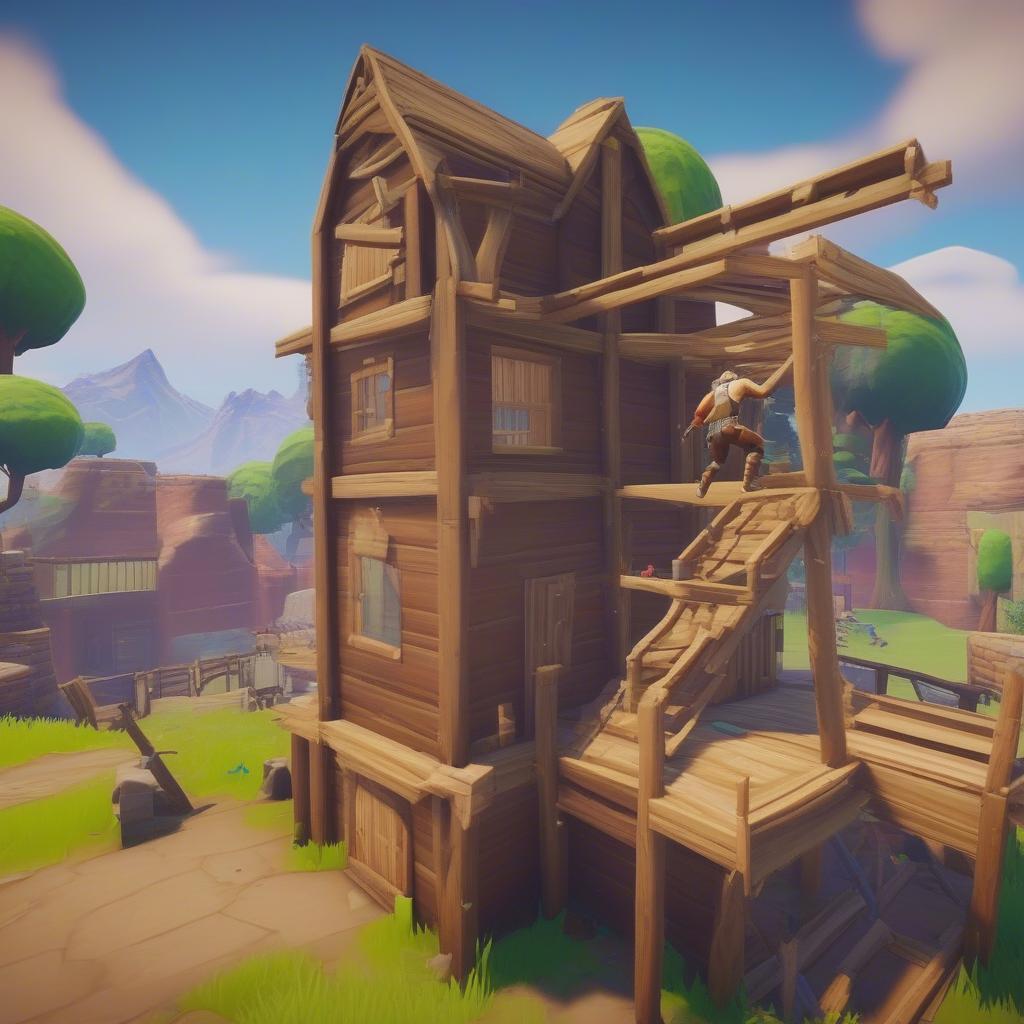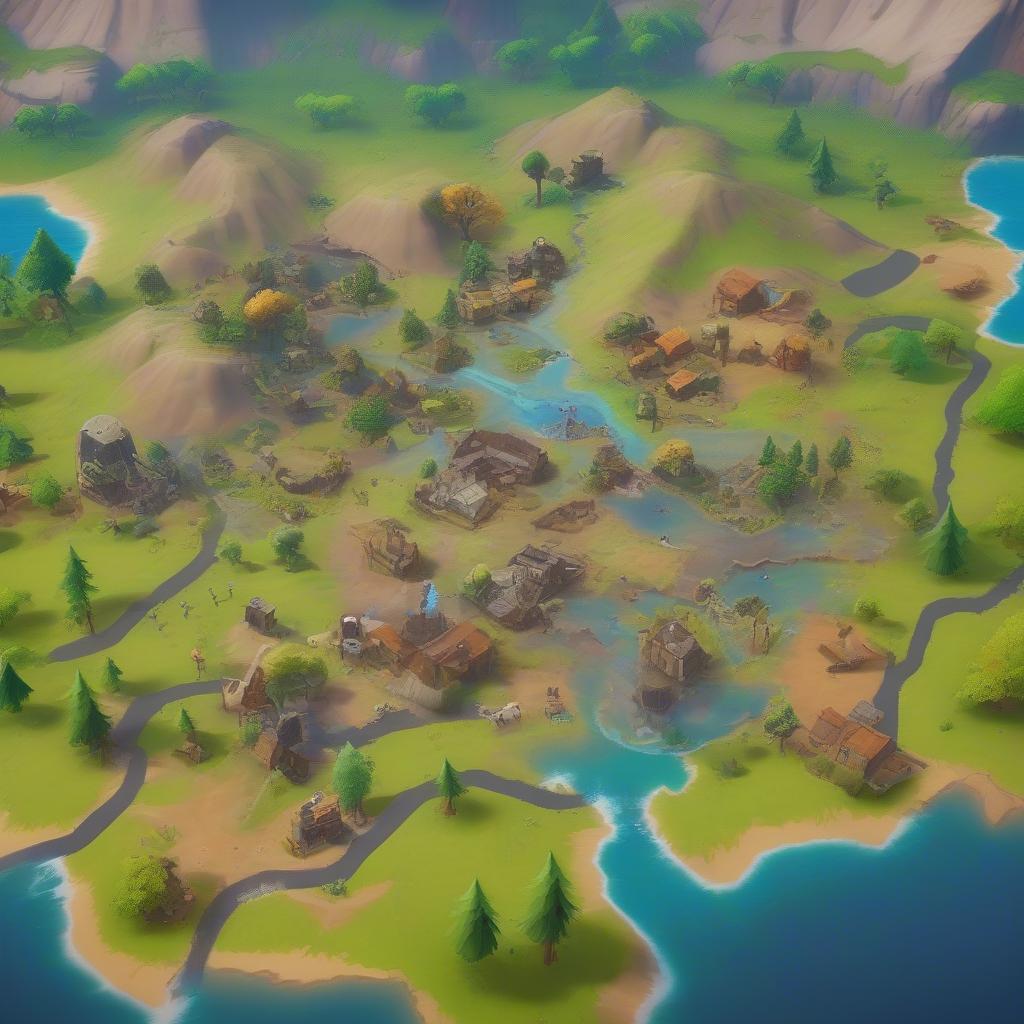Is Fortnite a FPS game? This is a question that often pops up among gamers, especially those new to the world of Fortnite. At Games Fortnite, we understand the confusion and are here to clarify exactly what kind of game Fortnite is. While it does involve shooting and combat, the classification isn’t as straightforward as you might think. This article delves deep into the genre, mechanics, and key characteristics of Fortnite to provide you with a clear answer, making sure you grasp the core essence of this incredibly popular game.
Fortnite is not a traditional First-Person Shooter (FPS) game like Call of Duty or Counter-Strike, although it has shooting elements. It is primarily known as a Battle Royale game, a genre that combines elements of survival, exploration, and player-versus-player combat, usually with a large number of players. While understanding the differences, let’s explore the nuances of how Fortnite blends different elements to create a unique gaming experience, and why it’s essential to know the difference.
Understanding First-Person Shooter (FPS) Games
So, what is a FPS game, exactly? In a nutshell, it’s a game where you view the world through the eyes of your character. Think of classic shooters where you see the gun and not much else of your avatar. The focus is usually on fast-paced combat, quick reflexes, and strategic use of weapons. These games are typically about eliminating opponents in maps or specific scenarios. The semantic entities here include first-person perspective, combat, guns, tactical maneuvers, and often, team-based objective play.
Key Characteristics of FPS Games
FPS games usually boast the following features:
- First-person perspective: The player views the game world through the character’s eyes.
- Focus on gunplay: Shooting mechanics are at the core of the gameplay.
- Fast-paced action: Quick reflexes and sharp aiming are crucial.
- Objective-based gameplay: Many FPS games have specific objectives, like capturing flags, defusing bombs, or controlling zones.
- Linear or small, detailed maps: Often, FPS maps are designed for tighter engagements.
These characteristics of FPS games are different compared to Fortnite, which blends elements from multiple genres. Therefore, while Fortnite includes shooting and combat, it diverges from the traditional FPS experience in significant ways. Semantic relevance is achieved here by showing how FPS games differ from Fortnite.
“Many players conflate the shooting mechanics in Fortnite with FPS games. However, the perspective and overall gameplay experience are very different,” says Dr. Evelyn Reed, a gaming genre expert.
Fortnite: A Unique Blend of Genres
Fortnite is a fascinating game that combines elements from various genres, including Battle Royale, survival, and even crafting games. Although players use guns, the primary gameplay loop involves building structures, gathering resources, and competing in a large-scale battle. This focus on more than just pure shooting is what sets it apart from traditional FPS titles. Semantic interoperability is maintained by explaining Fortnite within the framework of established genres and practices.
Why Fortnite Isn’t Just a FPS
Fortnite’s gameplay has several features that distinguish it from FPS games:
- Third-person perspective: In Fortnite, you view your character from behind, which is different from the first-person view in FPS games.
- Building mechanics: A core feature is the ability to build structures, which is not a standard feature of FPS games.
- Resource gathering: Players need to collect materials to craft weapons and build.
- Large-scale maps: Fortnite battle royale maps are large and usually include diverse terrains.
- Diverse gameplay modes: Beyond battle royale, there are other modes like “Save the World” and “Creative,” that further deviate from traditional FPS gameplay.
 fortnite third person perspective
fortnite third person perspective
The key difference lies in the perspective, as semantic consistency is achieved by using “first person” and “third person” accurately. In FPS, you’re locked into a view that limits your field of vision, making it all about fast-paced, close-quarters combat. In contrast, the third-person perspective in Fortnite allows you to have a more comprehensive view of your surroundings and make strategic building choices. If you want to optimize your game, look at How to optimize FPS in Fortnite and make sure that you’re on the right settings to ensure the best gaming experience.
Understanding the Battle Royale Element
The heart of Fortnite’s popularity is its Battle Royale mode. The semantic entities in battle royale include last-man-standing, shrinking map, parachuting, looting, and survival. Here, a large number of players (usually 100) parachute onto an island and battle it out until only one person or team remains. This mode requires a combination of shooting skills, resource management, and strategic thinking, which significantly deviates from the usual gameplay loop of FPS titles.
“Fortnite’s appeal lies in its dynamic blend of genres,” comments Adrian Bellwether, Lead Game Designer. “It combines aspects of shooting, survival, and construction in ways that make it stand out.”
The Differences Summarized
Let’s summarize the main differences between FPS games and Fortnite:
| Feature | FPS Games | Fortnite |
|---|---|---|
| Perspective | First-person | Third-person |
| Core Mechanic | Gunplay, fast-paced combat | Building, resource management |
| Gameplay Focus | Elimination, Objective | Survival, last-man-standing |
| Typical Game Size | Smaller, focused engagements | Large, expansive map |
| Building | Typically not included | Integral gameplay element |
| Resource Gathering | Not typically required | Essential for crafting |
As you can see, while there may be some overlap in the shooting mechanics, Fortnite is fundamentally different from FPS games in its core gameplay loop.
How to Optimize Your Fortnite Experience
While Fortnite isn’t a traditional FPS, many gamers still wish to optimize their frame rate (FPS) to enhance their gameplay experience. Improving FPS can make the game smoother, reducing input lag and visual stutter, providing you with a competitive edge. Here is an important consideration, which relates to How to optimize FPS in Fortnite, so be sure to check it out.
Tips for Boosting FPS in Fortnite:
- Adjust in-game graphics settings: Lowering graphics settings like shadows, textures, and effects can significantly boost FPS.
- Update graphics drivers: Ensure that your graphics card drivers are updated to their latest versions.
- Close background applications: Terminate any unnecessary applications running in the background that might consume system resources.
- Optimize PC performance: Adjust Windows settings for optimal gaming performance, including turning off unnecessary visual effects.
- Consider hardware upgrades: If feasible, upgrading your RAM, GPU, or CPU can help improve overall performance.
 fortnite building mechanics
fortnite building mechanics
Remember, having a good understanding of the game mechanics allows you to focus on the strategic elements. Semantic relevance is further enhanced by showing practical ways to improve in-game performance. You may also be interested in How to optimize FPS in Fortnite for additional tips.
The Evolution of Fortnite
It’s also worth noting that Fortnite has evolved since its initial release. Starting as a more cooperative survival shooter game in “Save the World,” it transformed into the global phenomenon it is today with the addition of the Battle Royale mode. This dynamic nature is also why it can be confusing to classify it simply as a traditional FPS, as it borrows so many elements and mechanics from different genres. It is this creative combination that makes Fortnite the hit that it is. Understanding these elements will help you truly enjoy all that the game has to offer, allowing you to become a formidable player, and appreciate the nuances that set it apart from other games. Semantic interoperability is maintained by understanding the history and evolution of Fortnite as a game.
Fortnite’s Unique Characteristics
- Constantly evolving gameplay: Fortnite regularly introduces new seasons, items, and mechanics, keeping the game fresh and exciting.
- Cross-platform play: Allows players to compete with friends on different consoles and devices.
- Collaborations and events: Fortnite often features tie-ins with major media franchises, creating unique in-game experiences.
- Community Engagement: Strong online community and regular competitions that encourage player growth.
 fortnite battle royale map
fortnite battle royale map
“Fortnite is more than just a game, it’s a dynamic platform that is always evolving,” emphasizes Clara Morales, Community Manager.
Is Fortnite a FPS? The Final Verdict
So, is Fortnite a FPS game? The short answer is no. While it incorporates elements of shooting and combat, its core gameplay mechanics, such as third-person perspective, building, and resource management, set it apart from traditional FPS games. Fortnite is primarily a Battle Royale game that also includes elements from survival and crafting games. By understanding its genre and gameplay mechanics, you can have a more enjoyable and strategic experience. If you want to increase your performance, then consider reading up on How to optimize FPS in Fortnite and learn what you can do.
Fortnite is a fascinating example of how a game can borrow from different genres to create something unique and innovative. Remember, understanding the nuances of a game’s mechanics can greatly enhance your experience. Visit Games Fortnite for more detailed guides, the latest updates, and strategies to take your game to the next level. Join our community, and let’s explore the ever-evolving world of Fortnite together.
